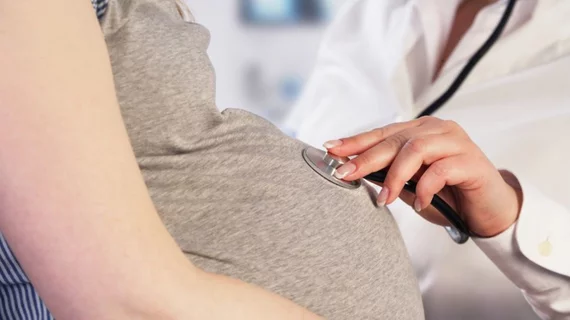New AI-based software uses ultrasound images to guide clinical decisions during childbirth
A new artificial intelligence-based software integrated into ultrasound devices could help to guide provider decisions during childbirth in real time.
The software uses measurements derived from imaging during a woman’s labor to determine a baby’s exact head position. Once calculated, it signals to providers whether to proceed with natural labor descension or initiate other interventions, such as use of a vacuum extractor or sending patients for emergency cesarean sections.
After a user captures the necessary images, the AI tool assesses them and gives providers either a green, red or yellow light. Green indicates that they can proceed with natural labor descension, red signals that an intervention is required, and yellow represents uncertainty.
A new paper in The European Journal of Obstetrics & Gynecology and Reproductive Biology details the development and implementation of the software. In the paper, researchers share that the software has “excellent” potential to help guide decisions during labor and delivery in the future.
"We have developed an AI model applied to ultrasound that can automatically assess fetal head position during childbirth within a fraction of a second, with excellent overall accuracy,” Tullio Ghi, professor of Gynecology and Obstetrics at the Catholic University of Rome, and colleagues noted.
Researchers used 2,154 transperineal ultrasound images acquired during labor from 16 different birth centers to train, test and validate their model. The labeled images were used to teach the model to recognize specific imaging features and patterns; they were acquired from a wide range of labor scenarios and included both births that were considered routine and those that required advanced interventions.
The software’s performance was graded based on its accuracy, sensitivity and specificity for classifying fetal head position. When retrospectively applied to transperineal images captured during labor, the software performed extremely well. For the classification of the fetal head position in the axial plane, it achieved an accuracy of 94.5%, a sensitivity of 95.6% and a specificity of 91.2%.
Assessing fetal head position, even with the use of ultrasound, can be difficult. Inaccurate assessments can lead to prolonged labor, incorrect positioning of vacuum extractors, failed extractions and delayed deliveries that can put both mothers and babies at risk of health complications. Having a decision support tool similar to the one developed for this study could be extremely helpful in situations when timely determinations on how to proceed with labor and delivery are required, especially among less experienced providers, the group suggested.
“The assessment of the fetal head position at transperineal approach is challenging for operators with little experience in fetal brain imaging, as accurate recognition of brain anatomical landmarks is essential for a correct assessment,” the authors explained. “The main clinical utility of our DL model lies in its fully automated capability to accurately differentiate among all subtypes of fetal head malpositions. This may provide obstetricians, especially those with less experience, with a reliable and fast recognition tool for the fetal head position.”
The software is set to undergo further validation on larger patient populations. If it continues to yield positive results, Ghi and colleagues anticipate that it could reach clinical use in the next 3-4 years.
Learn more about the study here.

